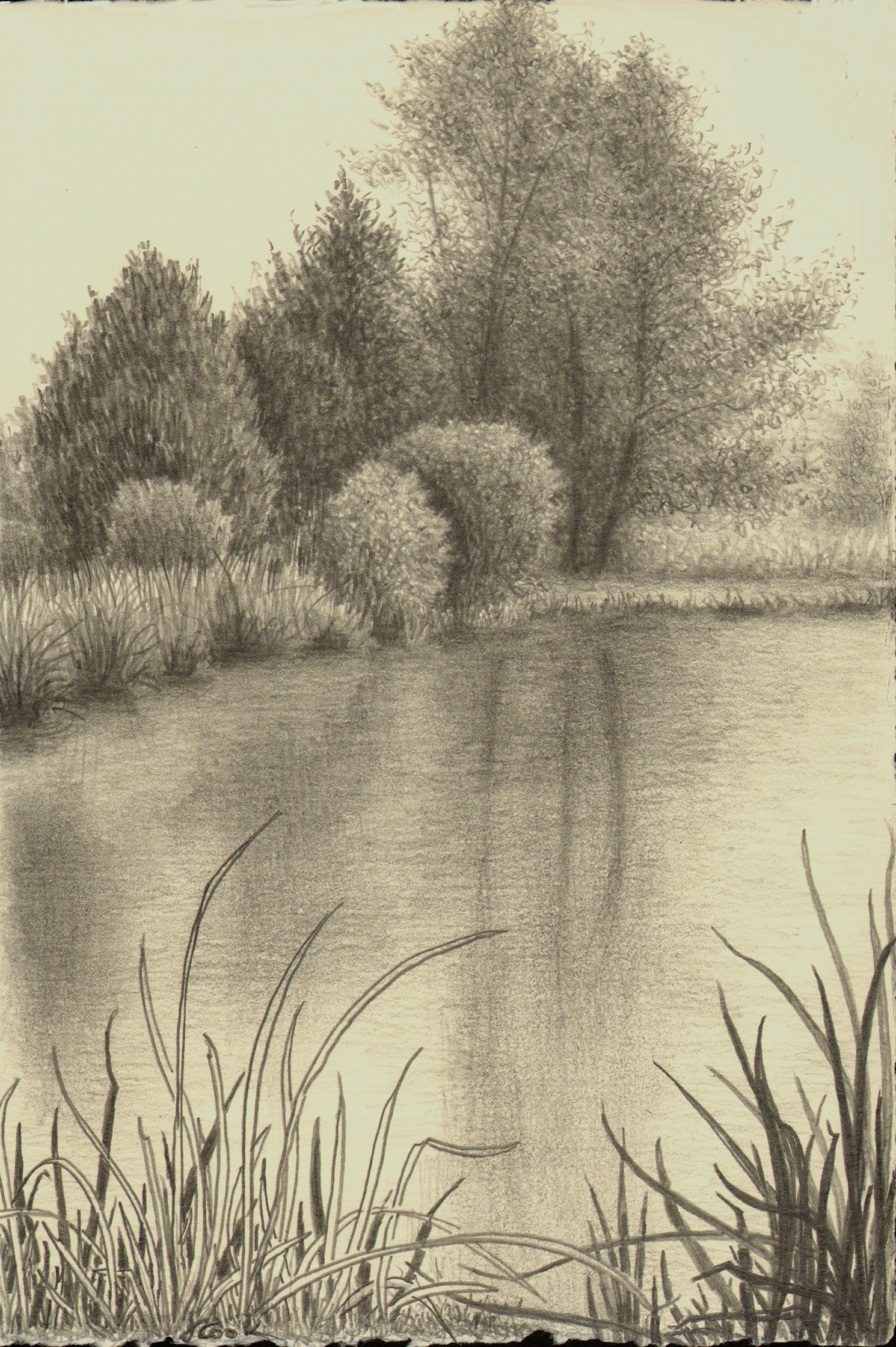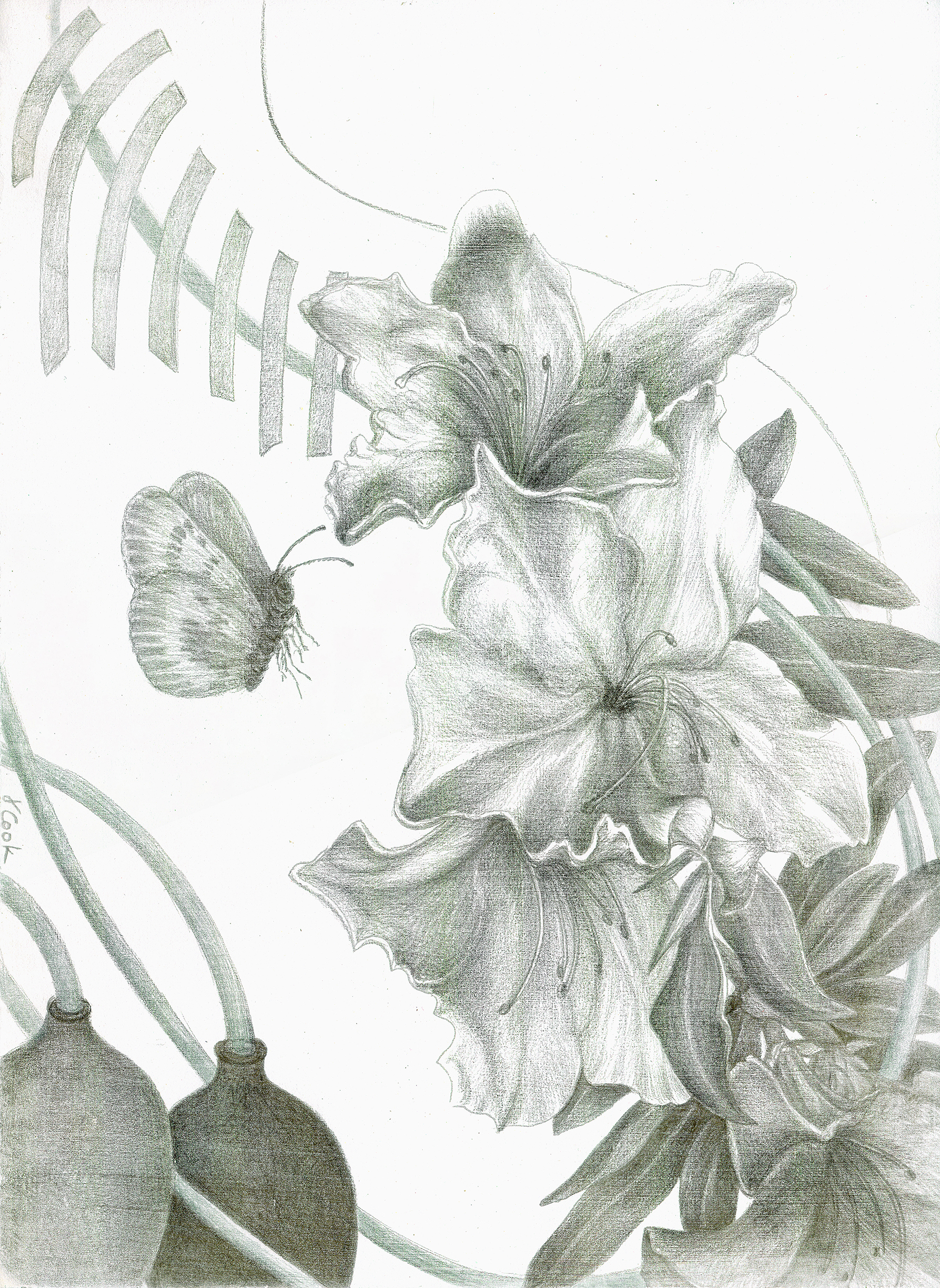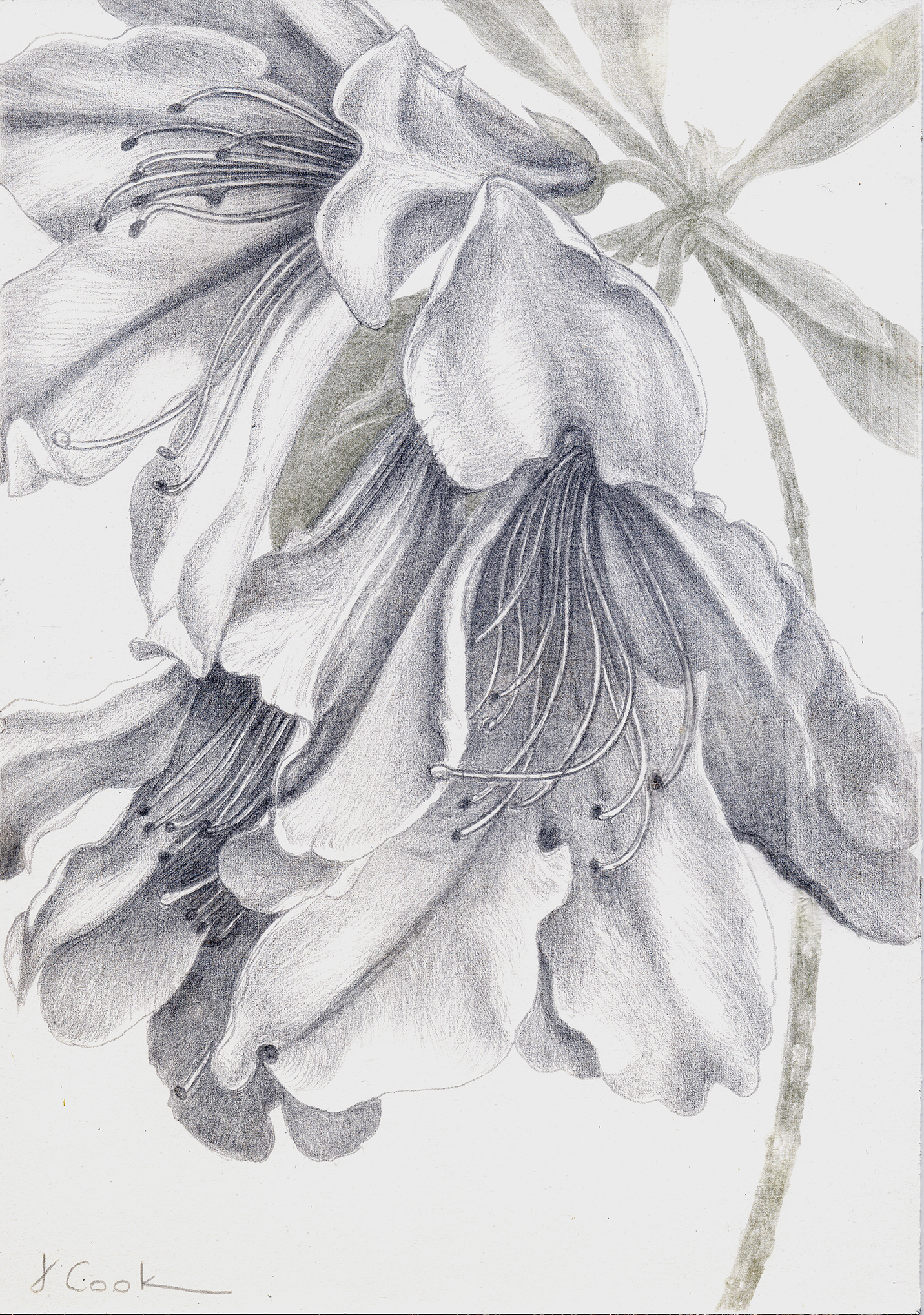I was so delighted when I was able to start drawing and painting again recently, after I recovered enough from surgery. I instantly felt much better, and instinctively I knew that I would continue to make progress in healing at a quicker rate, thanks to the art.
March at Butler Island, graphite, Jeannine Cook artist
Even more important to me was getting to the stage where I could try to incorporate the surgery in a drawing so as to exorcise the whole event and move on in life.
recovery from Surgery, silverpoint, Jeannine Cook artist
My feeling that my world was becoming more serene and coherent again through art was echoed recently by a remark made to me by a fellow artist. She had just returned to art-making too, after a hiatus of two years. During that time, she had battled cancer. Her conviction, she told me, was that the fact she had left off creating art two years ago had somehow contributed to her getting sick. Now that she is painting again, she feels much better. Her story impressed me with the power that art can have, not just for viewers, but for artists, as a healer.
I have written before about the powerful, if subtle, effect art can have in hospital and other medical settings. The role of helping artists heal themselves seems less well explored publicly, yet one knows of many artists who have dealt with important issues in their lives through art. I remember, many years ago, seeing a series of paintings of a black crow lying in snow that stopped me in my tracks. It was apparently a series of works done by an artist who had been recently widowed. She had found this dead crow, and it became the vehicle through which she could come to better terms with her bereavement. They were memorable, powerful paintings.
Thoughts about this important role of art as healer for artists themselves were running through my mind when I was listening today to a delightful interview on the BBC World Service with singer/musician/writer Salman Ahmad of Junoon. He was talking about his recently published book, A Muslim Rock Star's Revolution, and the accompanying disc which is soon to be released. This balanced, thoughtful Pakistani-American citizen of the world, who comes across as joyously constructive about matters of peace and understanding, used a phrase which caught my attention. It was "whispers of the heart".
Somehow this phrase expresses perfectly the subtle role that art plays in each artist's life, through music, visual art, poetry, drama or any other medium. Not only does an artist hear these whispers of the heart when creating art, but the expression seems to explain wonderfully what happens when the art is helping to heal the artist while he or she is working.









